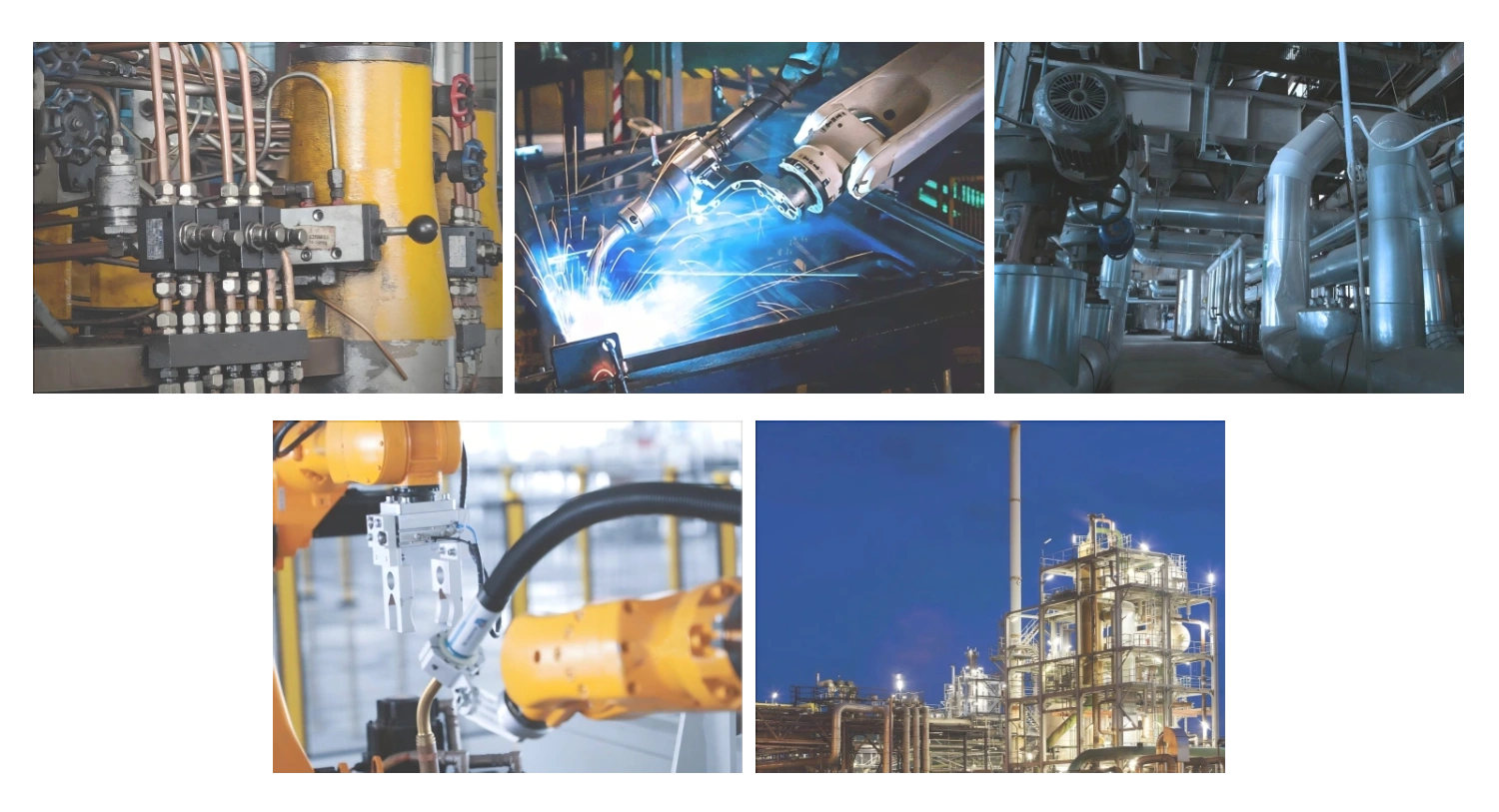السيليكون باعتباره بديلًا مستدامًا للبلاستيك
أزمة التلوث البلاستيكي العالمية وطلب السوق على بدائل أكثر أمانًا
كل عام، تصل حوالي 300 مليون طن من النفايات البلاستيكية إلى نظمنا البيئية، وتخيلوا ماذا؟ وفقًا لتقرير برنامج الأمم المتحدة للبيئة لعام 2022، فإن المواد ذات الاستخدام الواحد تشكل حوالي نصف كل القمامة العائمة في محيطاتنا. نحن هنا نواجه مشكلة جادة. منذ عام 2020، شهدنا زيادة تقارب الثلثين في عدد الأشخاص الذين يبحثون عن بدائل آمنة ودائمة، وخاصة من حيث تغليف الطعام أو تصنيع المنتجات اليومية. يبرز السيليكون كخيار مميز بين هذه البدائل لأنه لا يتلف بعد الاستخدام مرة واحدة فقط. يمكن لهذا المادة تحمل عدد لا حصر له من دورات التسخين والتبريد دون أن تفقد شكلها أو تماسكها، مما يجعلها خيارًا جذابًا مقارنة بالبلاستيك التقليدي الذي يتحلل بسرعة كبيرة.
التركيب الكيميائي والخصائص الجوهرية للسيليكون التي تمكّن الاستدامة
إن التركيب الفريد من السيليكون والأكسجين يمنح مادة السيليكون مقاومة مذهلة للحرارة تتراوح بين ناقص 40 درجة مئوية حتى 230 درجة، كما تبقى مرنة حتى في درجات الحرارة المنخفضة. لا يمكن للبلاستيك العادي منافسة هذه الخصائص. وبالحديث تحديدًا عن سيليكون الدرجة الطبية، فلا تحتوي هذه المادة على مواد ضارة مثل مادة BPA أو الفثالات. ما يميز هذه المادة أيضًا أنها لا تطلق جسيمات بلاستيكية صغيرة في أي شيء يلامسها، مما يعني أن الشركات المصنعة يمكنها الامتثال لمعايير إدارة الأغذية والعقاقير (FDA) الصارمة وكذلك متطلبات السلامة الغذائية في الاتحاد الأوروبي. وبفضل استقرار السيليكون بمرور الوقت، لا تميل المواد الكيميائية إلى الانتقال من الحاويات المصنوعة منه. وهذا يعني أقل قدر من المخاطر الصحية على المستهلكين، كما أنها أفضل للبيئة بشكل عام.
التطبيقات الواقعية: استبدال العبوات البلاستيكية ذات الاستخدام الواحد بمنتجات سيليكونية قابلة لإعادة الاستخدام
لقد قللت المطابخ التجارية من استخدام الأغلفة ذات الاستخدام الواحد بنسبة 90% من خلال استخدام أغطية السيليكون القابلة للتمدد، في حين أفادت المستشفيات بانخفاض بنسبة 80% في استبدال مكونات البلاستيك للتنقيط الوريدي بفضل أنابيب السيليكون القابلة للتعقيم. ومن خلال اعتماد أكياس السيليكون الغذائية على نطاق واسع، يمكن منع استخدام ما يقدر بـ 1000 كيس بلاستيكي من الاستخدام الواحد لكل أسرة سنويًا، مما يُظهر تقليلًا ملموسًا للنفايات على نطاق واسع.
الطلب المتزايد من المستهلكين والصناعة على السيليكون مقارنةً بالبلاستيك التقليدي
أظهر استبيان أجرته مبادرة الابتكار في المواد عام 2023 أن 78% من مصنعي السلع المعمرة يفضلون الآن استخدام السيليكون في إعادة تصميم المنتجات. ويعكس هذا التحول سلوك المستهلكين، حيث أن 72% منهم على استعداد لدفع مبلغ إضافي مقابل أدوات مطبخ من السيليكون، مع إدراكهم لطول عمرها الذي يتراوح بين 10 إلى 20 عامًا مقارنةً بمتوسط عمر البلاستيك الذي لا يتجاوز ستة أشهر.
الفوائد البيئية لمنتجات السيليكون القابلة لإعادة الاستخدام
تقليل النفايات البلاستيكية من خلال استخدام السيليكون على المدى الطويل في التطبيقات اليومية
إن الانتقال إلى استخدام المنتجات القابلة لإعادة الاستخدام المصنوعة من السيليكون يقلل بشكل كبير من النفايات البلاستيكية، حيث تحل محل تلك المنتجات ذات الاستخدام الواحد التي نجدها في منازلنا ومكاتبنا. فعلى سبيل المثال، يمكن للأكياس البلاستيكية المصنوعة من السيليكون أن توفر حوالي 180 كيساً بلاستيكياً سنوياً من التخلص منها في مكبات النفايات، وفقاً لتقرير المواد الدورية الصادر السنة الماضية. كما أن أدوات المطبخ المصنوعة من السيليكون تميل إلى البقاء لفترة تتراوح بين ثلاث إلى خمس سنوات حتى مع الاستخدام اليومي المتكرر. هذه الخيارات المتينة والمضادة للتسرب تعمل بشكل ممتاز في تخزين الطعام، وحفظ المشروبات بأمان، وتلبية احتياجات العناية الشخصية أيضاً. وبما أن كميات البلاستيك التي تنتهي في محيطاتنا سنوياً تقدر بحوالي 8 ملايين طن متري تقريباً، يصبح من المنطقي أن يتجه الكثير من الناس إلى هذه البدائل التي تدوم طويلاً.
تحليل دورة الحياة: البصمة الكربونية الأقل للسيليكون مقارنة بالبلاستيكيات ذات الاستخدام الواحد
قد يبدو أن السيليكون يتطلب طاقة أكثر في الإنتاج عند النظر إليه للوهلة الأولى، ولكن عند النظر إلى الصورة الأكبر، فإنه يترك في الواقع بصمة كربونية أصغر بكثير على المدى الطويل. تُظهر دراسات من مؤشر استدامة المواد أنه على مدى خمس سنوات، تُنتج المنتجات المصنوعة من السيليكون حوالي نصف النفايات الكربونية مقارنة بالبدائل. خذ على سبيل المثال أدوات الخبز (البايكر): فمعظم المنتجات المصنوعة من السيليكون تصل إلى نقطة التعادل من حيث الأثر البيئي بعد حوالي 40 استخدامًا، في حين تُنتج تلك الصواني ذات الاستخدام الواحد من الألومنيوم 14 ضعف الانبعاثات لكل وجبة يتم التعامل معها. ولا ننسى أيضًا مواد البناء. غالبًا ما تقلل المباني المزودة بأنظمة عزل مُحكمة بسيليكون من احتياجاتها من الطاقة لتسخين وتبريد الهواء (HVAC) بنسبة تقارب 18 في المئة، وهو أمر يُحدث فرقًا حقيقيًا كل شهر من حيث الأثر البيئي وفواتير الخدمات العامة وفقًا للتقارير الحديثة حول البناء الأخضر.
حفظ الموارد من خلال متانة منتجات السيليكون وإعادة استخدامها المتكررة
يعني العمر الطويل للسيليكون أننا نستخرج كميات أقل من المواد الخام من كوكبنا. فعلى سبيل المثال، يمكن لقسطرة السيليكون من الدرجة الطبية أن تحل محل حوالي ثلاثين قسطرة من مادة PVC على مدار عمرها الافتراضي. وعند النظر إلى الاستخدامات الصناعية، فإن خراشات السيليكون تتحمل الظروف القاسية لمدة خمس عشرة سنة أو أكثر، مقارنة بالبدائل المطاطية التي تحتاج عادةً إلى الاستبدال كل ستة أشهر إلى ثمانية عشر شهور. كما حققت صناعة السيارات نتائج ملحوظة أيضًا، حيث أفاد المصنعون بخفض النفايات المدفونة بنسبة تصل إلى تسعين بالمائة بفضل هذه القطع المتينة. وتتقدم جهود إعادة التدوير أيضًا، حيث يتم جمع حوالي اثنين وسبعين بالمائة من السيليكون المستخدم لإعادة الاستخدام هذه الأيام، مما يساعد على إنشاء تلك الدوائر المستدامة التي يتحدث عنها الجميع عند مناقشة المسؤولية البيئية.
الاستدامة والأداء في ظل الظروف البيئية القاسية
تحديات تدهور المواد في بيئات ذات حرارة ورطوبة عالية والإعدادات الصناعية
تتحلل البلاستيكيات التقليدية بسرعة في البيئات القاسية، مما يسهم في 22% من حالات فشل المعدات الصناعية (تقرير سلامة المواد 2023). تُظهر القضايا مثل تسرب الرطوبة في الإلكترونيات والتآكل الكيميائي في الأنابيب حدود البوليمرات القياسية، مما يزيد الطلب على مواد أكثر مقاومة.
الاستقرار الحراري والمرونة: لماذا يتفوق السيليكون على البلاستيك تحت الضغط
يبقى السيليكون مستقرًا من -60°م إلى 230°م، وهو ما يفوق بكثير حد معظم البلاستيكيات البالغ 80°م. تمنع هذه المقاومة ما يلي:
- الالتواء أو الذوبان في الأفران الصناعية
- الهشاشة في التخزين دون الصفر
- التسرب أثناء تغيرات درجة الحرارة
| الممتلكات | سيليكون | البلاستيك التقليدي |
|---|---|---|
| درجة الحرارة القصوى للتشغيل | 230°م | 80 درجة مئوية |
| المرونة عند البرودة | -60°م | -20°C |
| مقاومة الكيماويات | مرتفع | منخفضة-معتدلة |
تجعل هذه الخصائص مادة السيليكون ضرورية لاستخدامها في الختمات السيارات، وسدادات أنظمة التدفئة وتكييف الهواء، وتطبيقات أخرى تتعرض لدورات حرارية متكررة.
دراسة حالة: الكابلات والأنابيب المغمورة تحت الماء والمُغلَّفة بسيليكون في الظروف القاسية
وفقاً لدراسة أُجريت عام 2024 حول موثوقية المنشآت البحرية، فإن المنشآت التي تستخدم كابلات مُغلَّفة بسيليكون تواجه مشاكل صيانة بنسبة تقل حوالي 63% مقارنةً بالمنشآت التي تستخدم ختماً من البلاستيك. لماذا؟ لأن السيليكون لا يمتص ماء البحر بفضل خصائصه المقاومة للماء، كما أنه يتحمل التعرض لأشعة الشمس بشكل أفضل، مما يؤدي إلى تدهور المواد بمرور الوقت في البيئات البحرية. وتشير التقارير الصناعية إلى أن شركات خطوط الأنابيب تحقق عمرًا يقارب 15 سنة من الأقسام التي استخدم فيها السيليكون في الوصلات، وهو ما يعادل تقريباً ثلاثة أضعاف ما يحققه الختم القائم على البوليمرات والذي يدوم عادةً بين 5 إلى 7 سنوات قبل الحاجة إلى استبداله.
غير سام وآمن للاستخدام البشري والتطبيقات الطبية
التركيب الكيميائي الخامل للسيليكون يقلل من المخاطر الصحية والبيئية
الاستقرار الجزيئي للسيليكون يمنع التفاعل مع السوائل الجسدية والمحاليل ودرجات الحرارة القصوى، مما يلغي مخاطر تسرب السموم أو تفتت الجسيمات البلاستيكية الدقيقة. أظهرت دراسة نُشرت عام 2022 أن السيليكون يطلق فقط 0.02% من المخلفات الكيميائية تحت الضغط، مقارنة بـ 12.7% من مادة PVC. العلوم البيئية والتكنولوجيا أظهرت دراسة نُشرت عام 2022 أن السيليكون يطلق فقط 0.02% من المخلفات الكيميائية تحت الضغط، مقارنة بـ 12.7% من مادة PVC.
الموافقات التنظيمية ومعايير السلامة للمنتجات السيليكونية الصالحة للطعام والمنتجات الطبية
يجب أن تجتاز المنتجات السيليكونية بعض الاختبارات الصارمة نسبيًا قبل استخدامها في المجالات الحساسة. بالنسبة للتطبيقات التي تتلامس مع الطعام، يجب أن تمتثل للمعايير الصادرة عن الهيئة الأمريكية للغذاء والدواء (FDA) في اللائحة 21 CFR 177.2600. وفيما يتعلق بالأجهزة الطبية، فإن المعيار الدولي ISO 10993 يتحقق من مدى سلامة المادة تجاه الأنسجة الحية. أما بالنسبة للاستخدام الصيدلاني، فإن شهادة USP Class VI تضمن مستويات النقاء المناسبة. ومن حيث السلامة، فقد أكدت اللجنة العلمية للسلامة على المستهلك التابعة للاتحاد الأوروبي فعليًا أن السيليكون آمن للاستخدام في المنتجات التجميلية أيضًا. وتكمن أهمية كل هذه الشهادات المختلفة في كونها تضمن الاعتمادية عندما تكون هناك حاجة حقيقية لذلك. فقط انظر إلى المستشفيات – أكثر من 89 بالمئة من المعدات الموجودة في وحدات العناية المركزة للأطفال حديثي الولادة تستخدم مواد سيليكونية تفي بجميع هذه المتطلبات.
الاستخدام الموثوق للسيليكون في منتجات الأطفال، وأدوات الطهي، والأجهزة الطبية
أصبح السيليكون هو المادة المُفضَّلة للاستخدام في الأشياء التي تتطلب درجة أعلى من الأمان، فكّر في حلمات الزجاجات الخاصة بالرضّع والأنابيب الخاصة المستخدمة أثناء العلاج الكيميائي. لماذا؟ لأنها تستطيع تحمل التعقيم بالبخار ولا تسمح ببقاء البكتيريا بسهولة. لاحظت العديد من المستشفيات المتخصصة في طب الأطفال شيئًا مثيرًا للاهتمام أيضًا. عندما انتقلت المستشفيات من استخدام الأقنعة المطاطية إلى الأقنعة المصنوعة من السيليكون للأطفال حديثي الولادة، انخفضت التقارير عن ردود الفعل التحسسية بنسبة تصل إلى 63%. بالتأكيد يلاحظ الآباء الاختلاف. يميل معظم الأشخاص أثناء التسوق لشراء أدوات المطبخ هذه الأيام إلى اختيار صواني الخبز المصنوعة من السيليكون بدلًا من الصواني المبطنة بالبلاستيك التقليدية. يختار حوالي 78% من الناس السيليكون لأنهم يشعرون بأنه أكثر أمانًا ويدوم تقريبًا إلى الأبد. يدّعي البعض أنهم استخدموا نفس الصواني مئات المرات دون مواجهة أي مشاكل على الإطلاق.
السيليكون مقابل البلاستيك: مقارنة بين التأثير البيئي والسلامة
المخاوف العامة بشأن الميكروپلاستيك والتسرب الكيميائي من البلاستيكات التقليدية
يؤدي التلوث بالمايكروبلاستيك إلى تلوث 94% من مياه الصنبور في الولايات المتحدة (USGS 2024)، ويطلق البلاستيك التقليدي أكثر من 1.1 مليون طن متري منه في المحيطات سنويًا. تدخل هذه الجسيمات سلاسل الغذاء وتضر بالحياة البحرية، في حين تؤثر مواد كيميائية مثل BPA بشكل ضار على الأنظمة الهرمونية لدى البشر والكائنات البرية.
لماذا السيليكون أكثر أمانًا واستقرارًا: مقارنة بين ملامح السمية والتحلل
إن بنية السيليكون القائمة على السيليكا مقاومة للتحلل تحت أشعة UV والحرارة، بعكس البلاستيك المنتقع من النفط. تشمل الاختلافات الرئيسية ما يلي:
| الممتلكات | سيليكون | البلاستيك التقليدي |
|---|---|---|
| المقاومة الحرارية | -60°م إلى 300°م | يتشوه فوق 120°م |
| تسرب المواد الكيميائية | لا شيء | اكتُشف وجود BPA وفثالات |
| العمر الافتراضي | أكثر من 20 عامًا | 2-5 سنوات |
تجعل هذه الخصائص السيليكون خيارًا أكثر أمانًا وأطول عمرًا.
معالجة بعض المفاهيم الخاطئة: قابلية تحلل السيليكون وتحديات إعادة التدوير
على الرغم من عدم قابلية السيليكون للتحلل الحيوي، فإنه لا يتفكك إلى مايكروبلاستيك. يمكن إعادة تدويره في منشآت متخصصة لتحويله إلى مواد تشحيم أو مواد بناء، على الرغم من أن البنية التحتية لإعادة التدوير لا تزال في طور التطور. إن متانته العالية تقلل بطبيعة الحال حجم النفايات وخطر التلوث.
الإجماع العلمي والاتجاهات السياسة التي تدعم استخدام السيليكون كمادة ذات تأثير منخفض
يُبرز خطة الاتحاد الأوروبي للاقتصاد الدائري لعام 2023 مادة السيليكون في الاستعمالات الطبية والغذائية، ويُدعم ذلك شهادات NSF/EC1935. تؤكد تقييمات دورة الحياة أن المنتجات المصنوعة من السيليكون تقلل النفايات البلاستيكية بنسبة 83٪ على مدى عشر سنوات مقارنة بالمنتجات ذات الاستخدام الواحد، مما يعزز دورها في الابتكار في المواد المستدامة.
الأسئلة الشائعة
ما يجعل مادة السيليكون بديلاً مستدامًا للبلاستيك؟
تُعتبر مادة السيليكون بديلاً مستدامًا للبلاستيك التقليدي بفضل متانتها، ومقاومتها للحرارة والمواد الكيميائية، وقدرتها على إعادة الاستخدام المتكررة دون تدهور في جودتها.
هل المنتجات المصنوعة من السيليكون صديقة للبيئة؟
على الرغم من أن مادة السيليكون غير قابلة للتحلل الحيوي، إلا أنها تُعتبر مفضلة بيئيًا بفضل متانتها ومنعها التفتت إلى ميكروبلاستيك. كما تتطور بنية إعادة تدوير السيليكون لتعزيز صداقة المنتجات البيئية بشكل أكبر.
لماذا تُعتبر مادة السيليكون آمنة للاستخدام في المجالات الطبية والغذائية؟
إن التركيب الكيميائي الخامل للسيليكون لا يتفاعل مع السوائل الجسدية أو يرشح مواد كيميائية، مما يجعله آمنًا للاستخدام في التطبيقات الطبية والغذائية، كما أكدته موافقات ومواصفات تنظيمية مختلفة.
هل يمكن للسيليكون حقًا تقليل النفايات البلاستيكية؟
نعم، يمكن للسيليكون تقليل النفايات البلاستيكية بشكل كبير من خلال استبدال المنتجات البلاستيكية ذات الاستخدام الواحد ببدائل قابلة لإعادة الاستخدام ولها عمر افتراضي أطول.
كيف يقارن البصمة الكربونية للسيليكون مع البلاستيك القابل للتخلص منه؟
على الرغم من أن إنتاج السيليكون في البداية يتطلب طاقة أكثر، فإن استخدامه على المدى الطويل يؤدي إلى بصمة كربونية أقل مقارنةً بالبلاستيك القابل للتخلص منه، خاصةً بعد استخدامه المتكرر على مدار عدة سنوات.
جدول المحتويات
-
السيليكون باعتباره بديلًا مستدامًا للبلاستيك
- أزمة التلوث البلاستيكي العالمية وطلب السوق على بدائل أكثر أمانًا
- التركيب الكيميائي والخصائص الجوهرية للسيليكون التي تمكّن الاستدامة
- التطبيقات الواقعية: استبدال العبوات البلاستيكية ذات الاستخدام الواحد بمنتجات سيليكونية قابلة لإعادة الاستخدام
- الطلب المتزايد من المستهلكين والصناعة على السيليكون مقارنةً بالبلاستيك التقليدي
- الفوائد البيئية لمنتجات السيليكون القابلة لإعادة الاستخدام
- تقليل النفايات البلاستيكية من خلال استخدام السيليكون على المدى الطويل في التطبيقات اليومية
- تحليل دورة الحياة: البصمة الكربونية الأقل للسيليكون مقارنة بالبلاستيكيات ذات الاستخدام الواحد
- حفظ الموارد من خلال متانة منتجات السيليكون وإعادة استخدامها المتكررة
- الاستدامة والأداء في ظل الظروف البيئية القاسية
- غير سام وآمن للاستخدام البشري والتطبيقات الطبية
-
السيليكون مقابل البلاستيك: مقارنة بين التأثير البيئي والسلامة
- المخاوف العامة بشأن الميكروپلاستيك والتسرب الكيميائي من البلاستيكات التقليدية
- لماذا السيليكون أكثر أمانًا واستقرارًا: مقارنة بين ملامح السمية والتحلل
- معالجة بعض المفاهيم الخاطئة: قابلية تحلل السيليكون وتحديات إعادة التدوير
- الإجماع العلمي والاتجاهات السياسة التي تدعم استخدام السيليكون كمادة ذات تأثير منخفض
- الأسئلة الشائعة







